Mastering the Art of Lead Capture to Boost Your Conversions
Anya Vitko
Contents
- What Is Lead Capture?
- Understanding Lead Capture in Modern Sales
- 5 High-Converting Lead Capture Strategies You Should Know
- Optimizing Your Lead Capture Process
- Lead Nurturing After Capture
- Compliance and Data Privacy in Lead Capture
- Integrating Lead Capture with Your Sales Stack
- Measuring and Reporting on Lead Capture Success
Lead capture is the first step toward boosting conversions for any business because when potential B2B clients share their data with your sales and marketing teams, it kicks off lead nurturing campaigns.
We are all well aware of old-fashioned lead capture tools, such as static client intake forms. Modern customers no longer want to share their private information unless they feel appreciated by a brand.
In this article, we will explore how to take your lead capture strategy to the next level by facilitating customer engagement by using such lead capture solutions as chatbots, multi-step forms, and interactive product demos. Capturing leads isn’t an end in itself, so we will give some tips on how to best handle leads once they have trickled into your sales pipeline.
Here’s what we’ll cover:
- What Is Lead Capture?
- Understanding Lead Capture in Modern Sales
- 5 High-Converting Lead Capture Strategies You Should Know
- Optimizing Your Lead Capture Process
- Lead Nurturing After Capture
- Compliance and Data Privacy in Lead Capture
- Integrating Lead Capture with Your Sales Stack
- Measuring and Reporting on Lead Capture Success
What Is Lead Capture?
Lead capture is the process of collecting information from potential customers, or leads, who have shown interest in your product or service.
Lead capture is the direct result of a lead generation process, which is likely to be more effective with a well-oiled demand generation process in place.
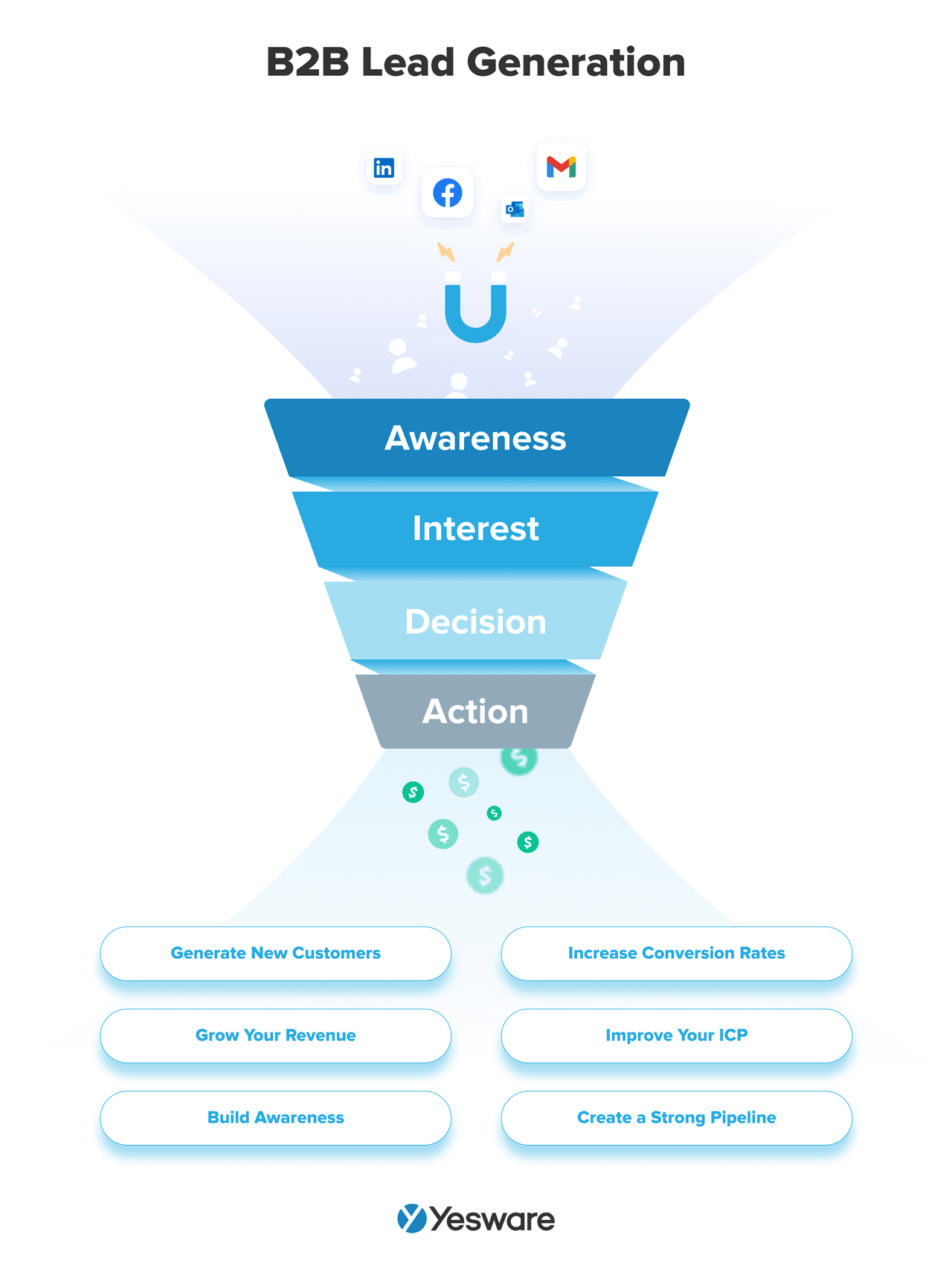
Tip: If your lead generation isn’t performing well, explore demand generation vs lead generation to see if maybe your demand generation strategy is lagging.
The primary goal of lead capture is to convert visitors into actionable leads that can be nurtured through the sales funnel, ultimately leading to a purchase.
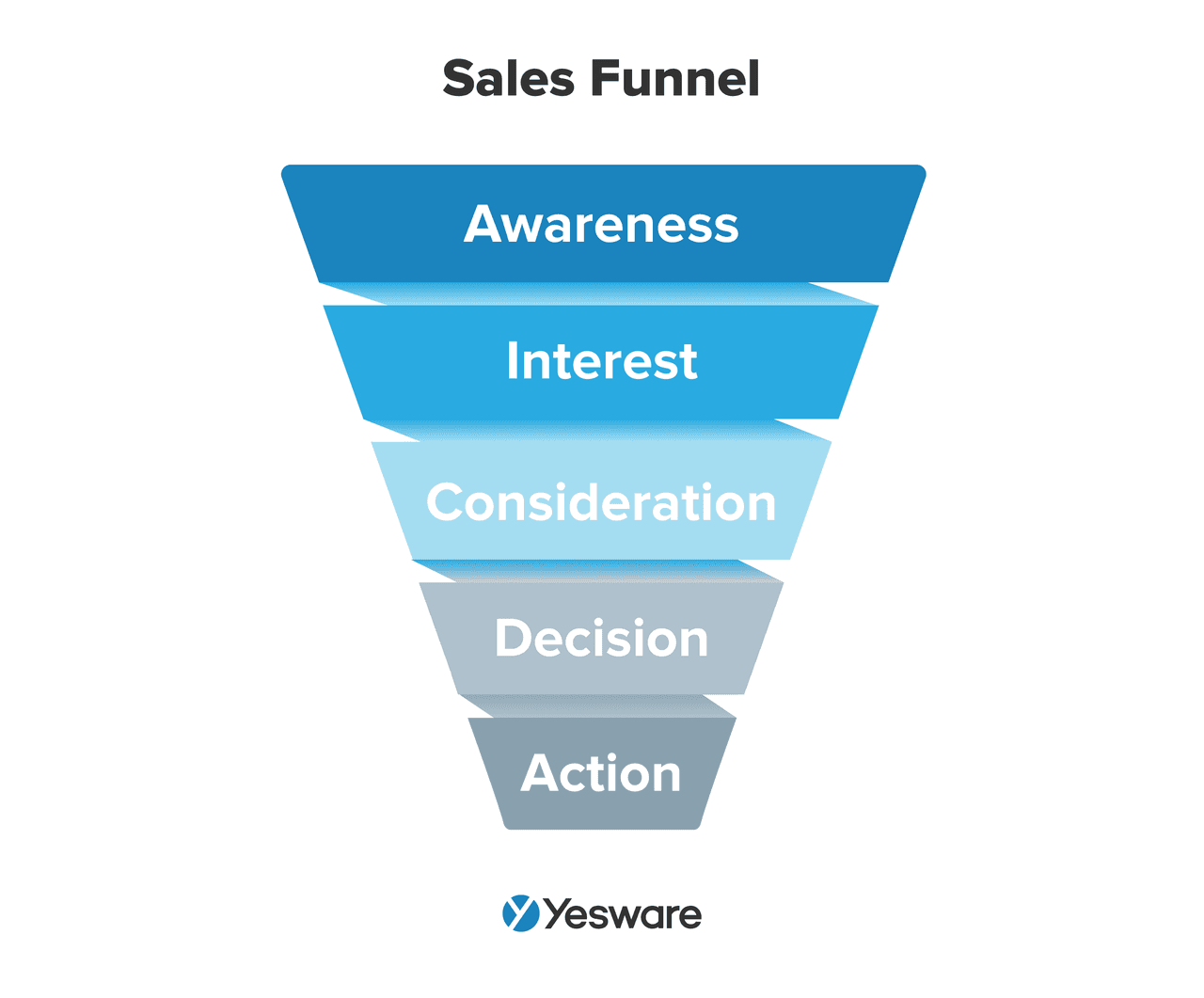
In the context of sales, lead capture marks the beginning of the customer journey. It provides sales teams with the necessary information to start designing their game plan for how to convert leads into sales.
Effective lead capture strategies ensure that businesses not only gather information from a wide range of prospects but also focus on high-quality leads that closely match a business’s ICPs.
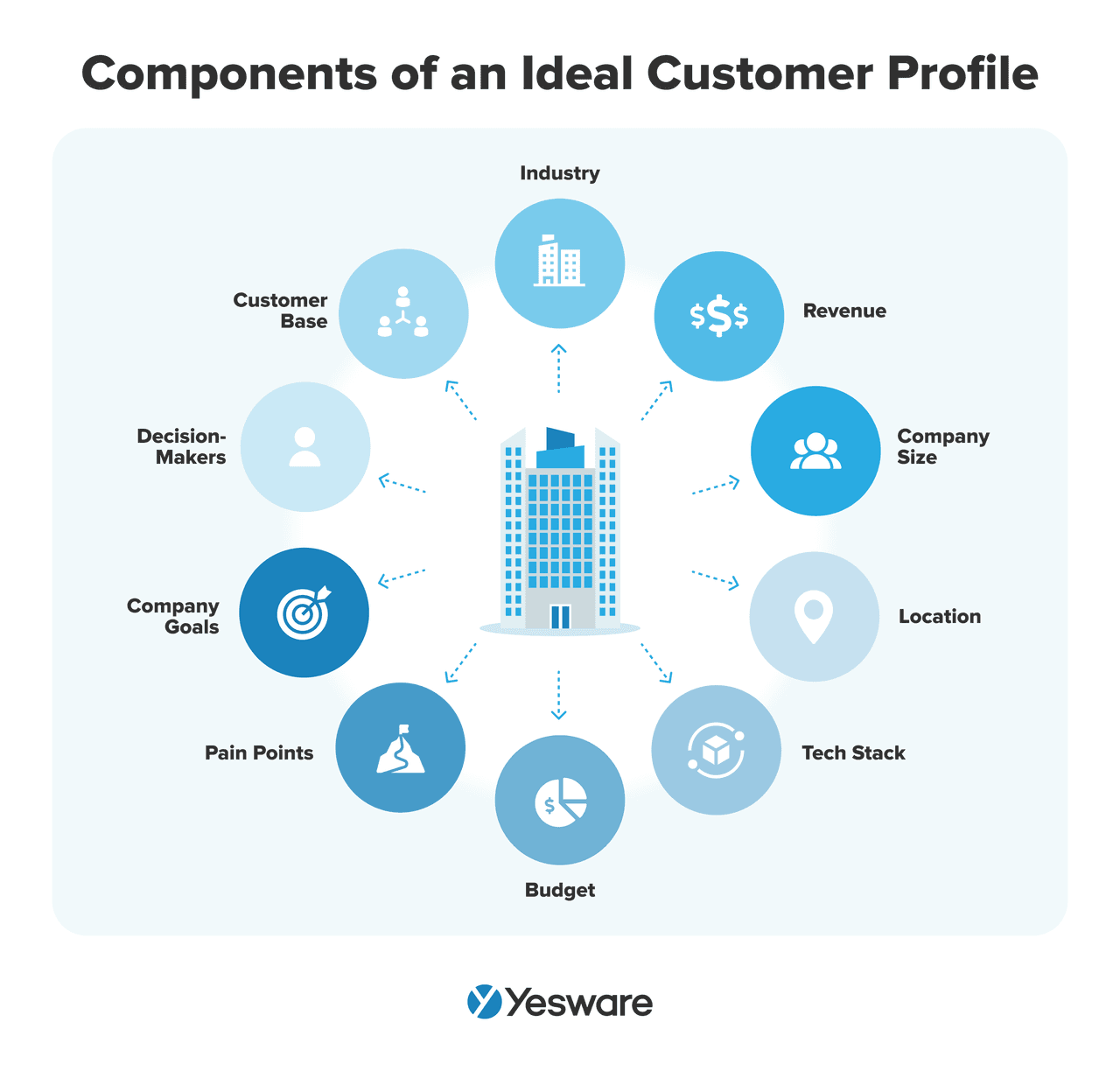
While lead capture is a fundamental aspect of the sales process, it is not without its challenges. With an overwhelming amount of data available, it can be difficult to filter through and identify leads that are most likely to convert.
Additionally, the increasing concern around data privacy and security has made consumers more cautious about sharing their information, complicating the lead capture process even further.
Another challenge is the need for personalization in lead capture efforts. Generic forms and non-targeted lead capture methods often result in low conversion rates because they fail to resonate with the specific needs of potential customers.
Understanding Lead Capture in Modern Sales
Lead capture has evolved significantly over the years. In the past, lead capture methods were relatively straightforward, often involving simple forms on websites or direct contact through sales calls.
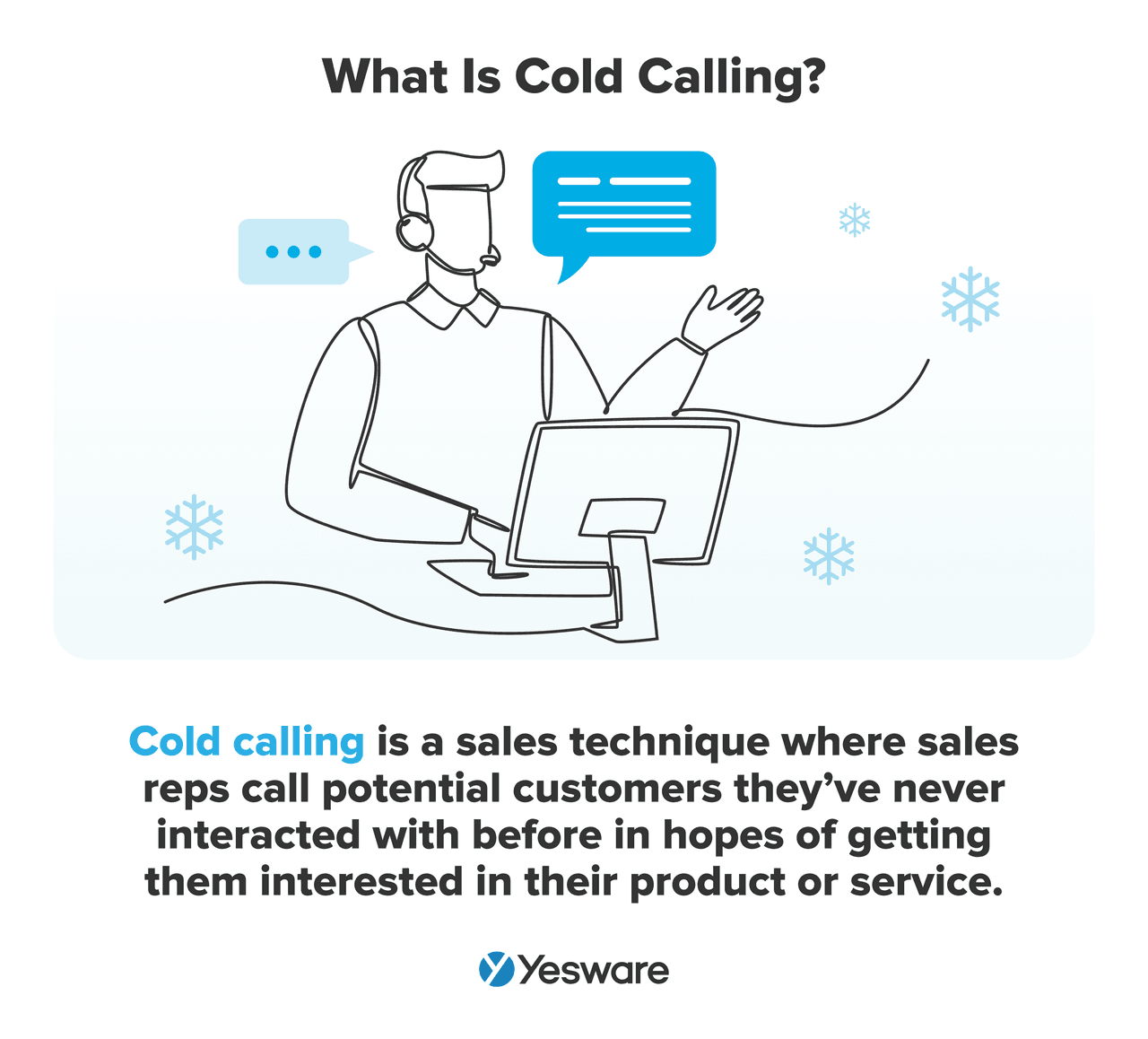
The ever-increasing number of sales productivity tools has made lead capture more sophisticated and data-driven.
5 High-Converting Lead Capture Strategies You Should Know
1. Interactive Forms
Multi-step forms are a powerful tool for sales engagement. These forms reduce friction by breaking down the process of data entry into manageable steps, leading to higher completion rates.
When creating interactive forms, it is worthwhile to limit the number of fields, use clear and concise language, and ensure the form is mobile-friendly.
Interactive forms can’t exist in a vacuum. It’s best to back them up with a CRM, such as Vendasta CRM or Salesforce CRM. Whenever a lead fills out the form, the information gets stored in a CRM.
Once you integrate the CRM with an email automation tool, such as Yesware, you can set the rule for a follow-up email to be sent out every time a lead completes an interactive form.
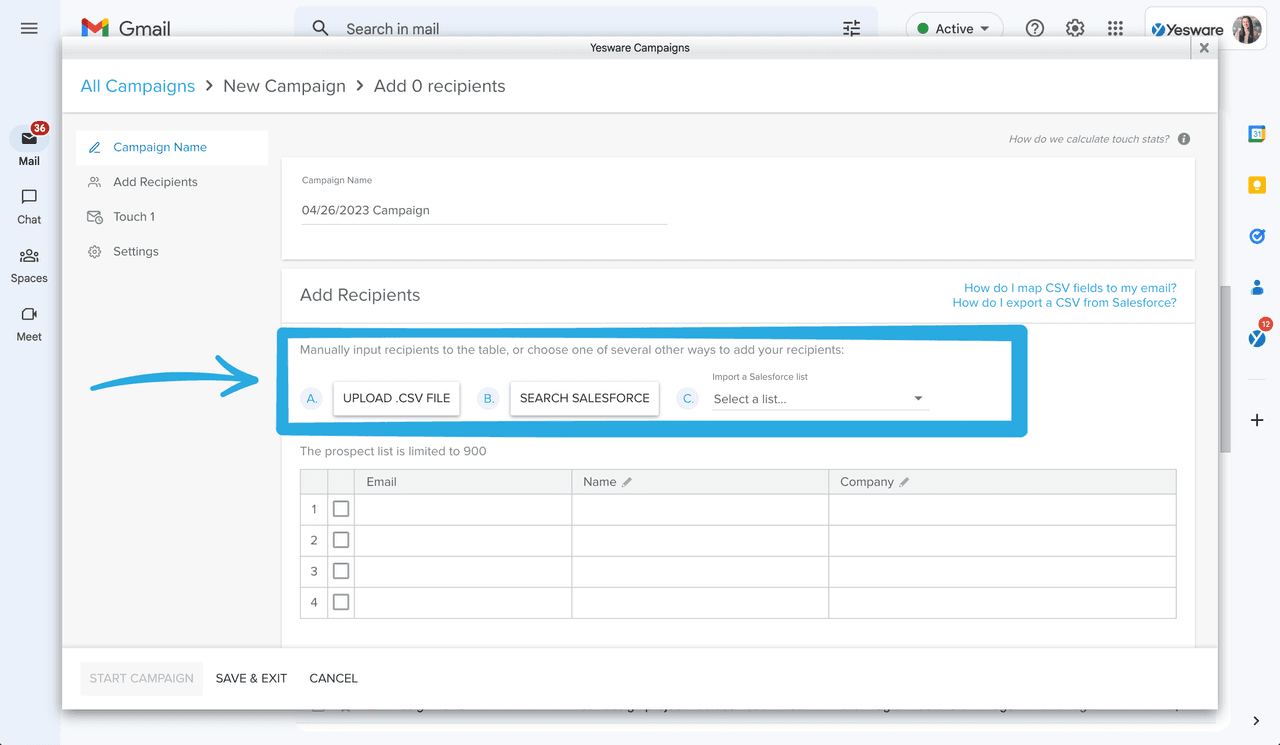
Tip: Read this blog to learn how quickly you should contact inbound leads.
2. Chatbots and Live Chat
Time is money. By adding a chatbot to your sales tech stack, you can capture leads around the clock, even when your sales team is offline.
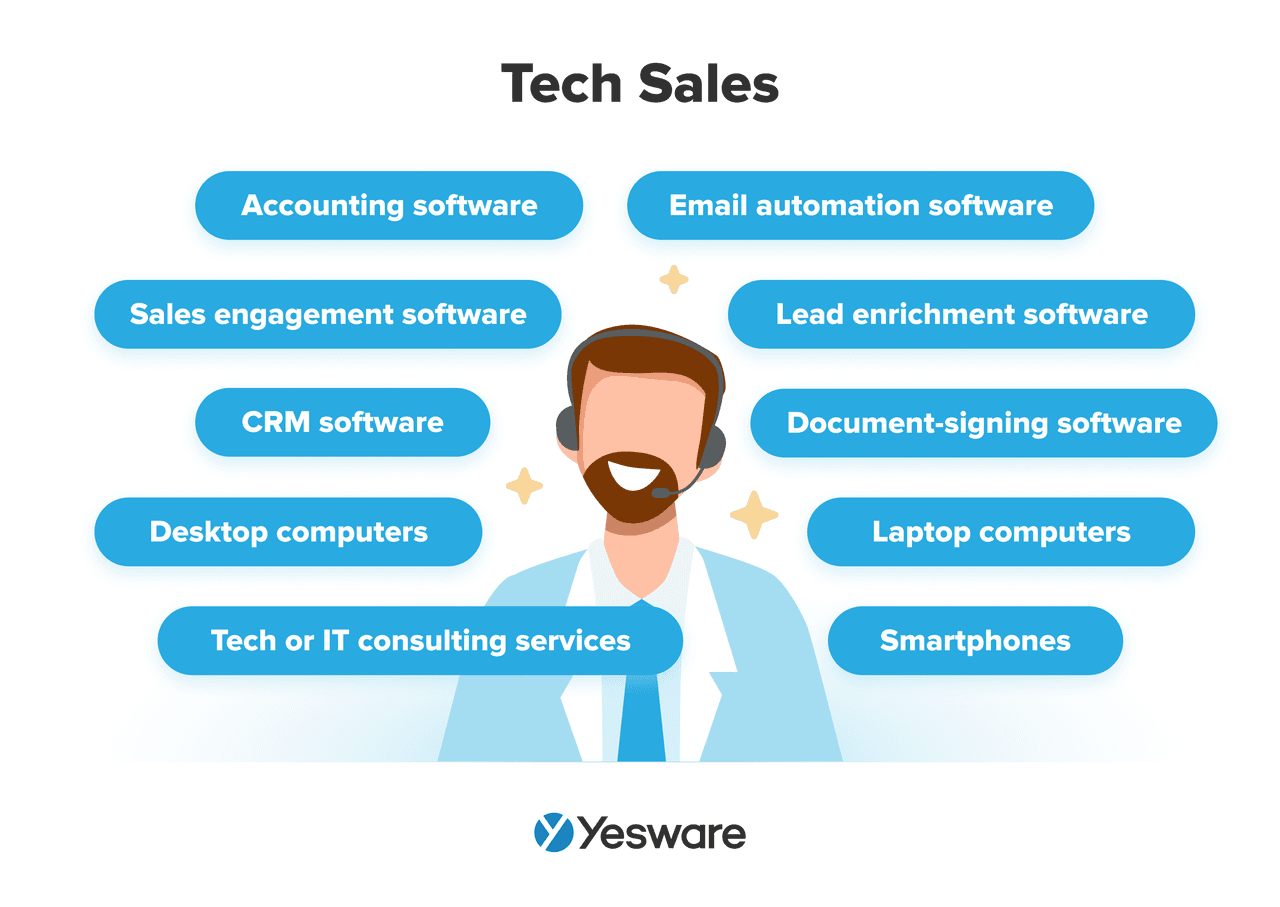
AI-powered chatbots can engage visitors and answer common questions, all while collecting valuable lead information.
Chatbots are invaluable B2B sales tools that help sales teams fill their sales pipelines with the most qualified leads.
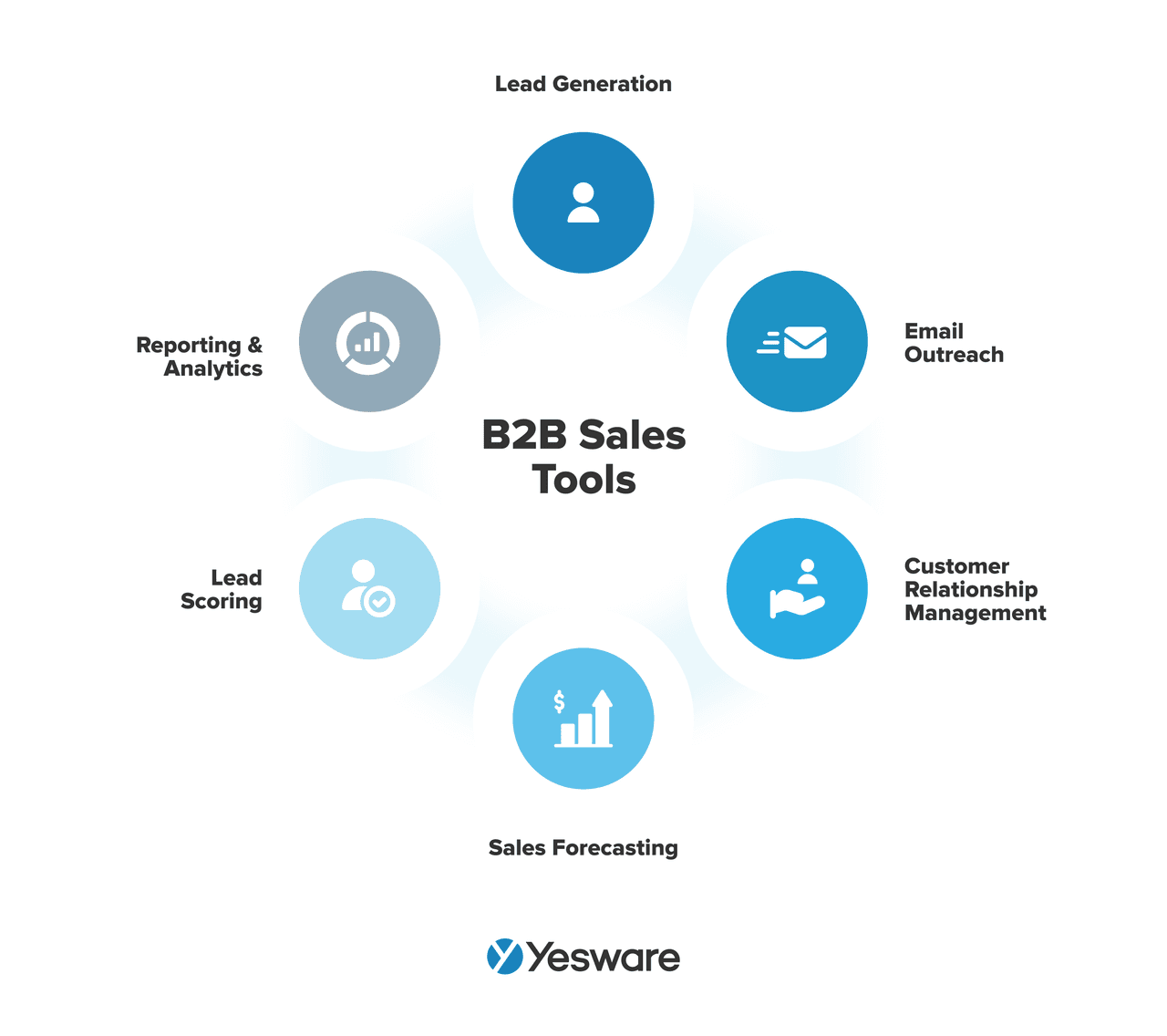
For example, a visitor to your website can ask a chatbot to schedule a demo with the sales team. This helps make sure that your sales reps invest efforts into engaging with the leads that are most likely to convert.
One of the overlooked benefits of chatbots is that they provide an opportunity to review chat transcripts. These records offer insights into the pain points of your potential customers. Sales teams can use this information to tailor their follow-up conversations, making their outreach more effective.
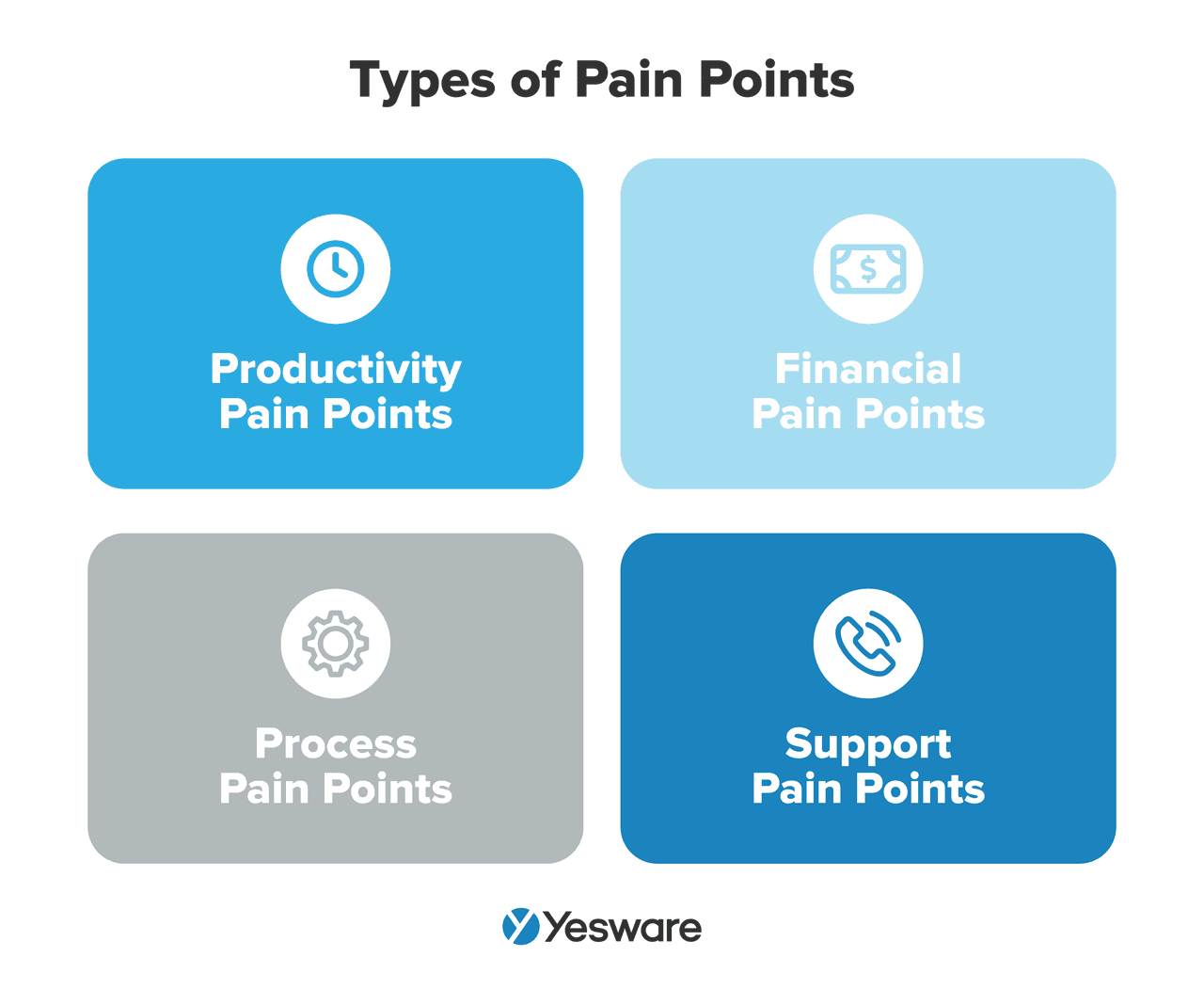
For example, if a chatbot frequently receives questions about pricing, this could indicate a need to address pricing concerns earlier in the sales process.
3. Content Upgrades and Lead Magnets
Content upgrades and lead magnets are powerful tools for capturing leads data by offering something of value in exchange for contact information.
These could be in the form of eBooks, whitepapers, checklists, or templates that provide in-depth knowledge or tools your audience finds useful.
The key to a successful lead magnet is relevance—ensure that the content is closely aligned with the needs and interests of your target audience. By addressing specific pain points or offering actionable insights, you increase the likelihood of conversion.
Yesware’s email templates can help you set up an email marketing campaign that automatically delivers your lead magnets to your leads. Additionally, Yesware’s email tracking enables you to see who opens the emails and engages with the content, providing further insights into lead interest and behavior.
![]()
You could also consider a gating strategy. This is when you place high-value content behind a lead capture form, requiring visitors to provide their information before accessing the resource.
This approach is highly effective for adding qualified leads to your sales pipeline dashboard.
When implementing a gating strategy, remember to strike a balance—if the barrier to access is too high, you might deter potential leads.
A/B testing comes in handy here. Experiment with different levels of gating, such as requiring only an email address or additional details like job title and company size, to find what works best for your audience.
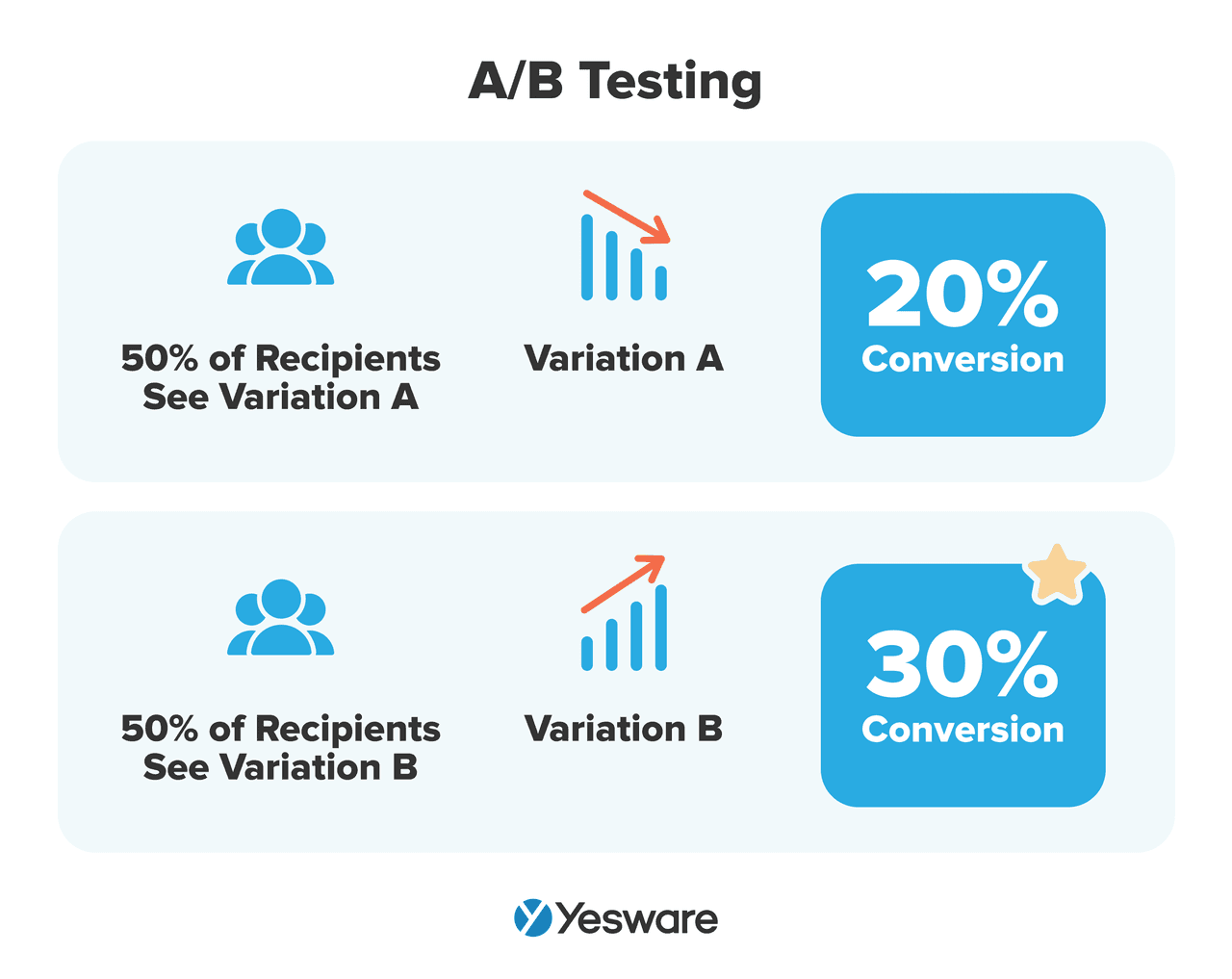
4. Interactive Product Demos
Interactive product demos are an increasingly popular lead-capture tool that gives your potential customers an opportunity to explore your product at their own pace.
Self-guided tours let users experience the product’s value firsthand. These demos can also be designed to capture lead information at key points, such as when a user completes a tour or requests additional information.
To capitalize on the interest generated by an interactive demo, it’s important to make it easy for leads to take the next step. Once a lead completes the self-guided tour and gives your sales team their email, you could leverage Yesware’s meeting scheduler to facilitate the prospect’s booking of a follow-up meeting with your sales team.
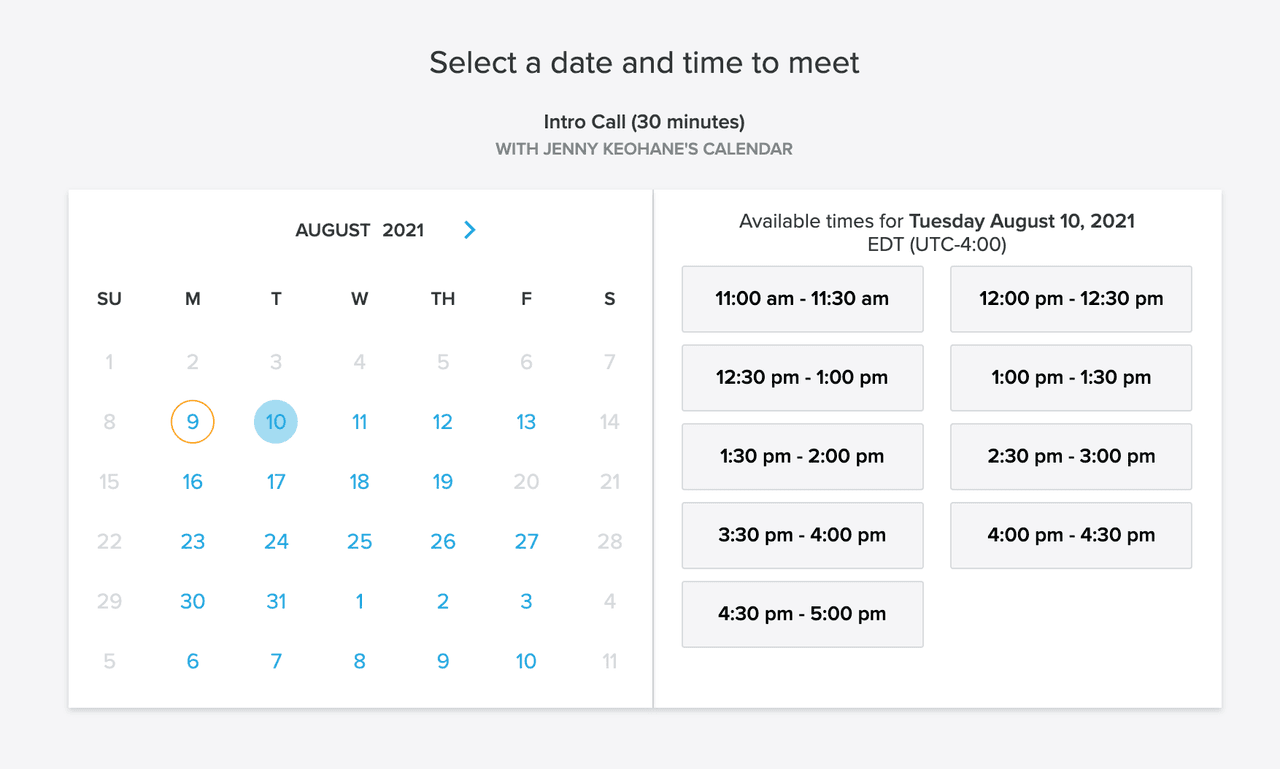
5. Gamification in Lead Capture
Quizzes, surveys, and other interactive elements are excellent ways to capture leads while also providing value and facilitating the lead qualification process.
For example, a quiz that helps users determine the best product for their needs not only captures their information but also gives them a reason to engage with your brand.
The key to effective gamification is to ensure that it aligns with your overall lead capture marketing strategy and provides a seamless user experience.
Beyond capturing leads, gamification can also be used to qualify them. By designing quizzes or surveys that include questions about budget, company size, or specific needs, you can gather valuable information that helps you prioritize leads.
This ensures that your sales team focuses their efforts on the most promising prospects, improving conversion rates and overall sales efficiency.
Optimizing Your Lead Capture Process
Continuous optimization is key to successful lead capture. A/B testing different elements of your capture forms, such as headlines, call-to-action buttons, and field placements, can reveal what works best.
Personalizing lead capture forms based on user behavior, such as pages visited or previous interactions, can also improve conversion rates.
Lead Nurturing After Capture
When it comes to lead nurturing, timing is everything. Studies show that responding to a new lead within five minutes increases the chances of conversion by 21 times compared to waiting just 30 minutes.
A quick follow-up demonstrates that your business is responsive and values the prospect’s time, setting the tone for a positive relationship. Delays, on the other hand, can lead to cold leads as interest wanes or competitors swoop in.
Timely follow-up isn’t just about speed; it’s also about relevance. Your initial response should acknowledge the lead’s specific interest or action—whether they downloaded a resource, requested a demo, or engaged with your chatbot.
A typical nurture sequence might begin with a welcome email that thanks the lead for their interest and introduces your brand’s value proposition. Subsequent emails can provide additional resources, such as case studies, product comparisons, or testimonials, tailored to the lead’s specific interests.
The goal is to keep your brand top-of-mind while providing valuable information that addresses the lead’s pain points.
Tip: Grab proven email templates to help you capture more leads below.
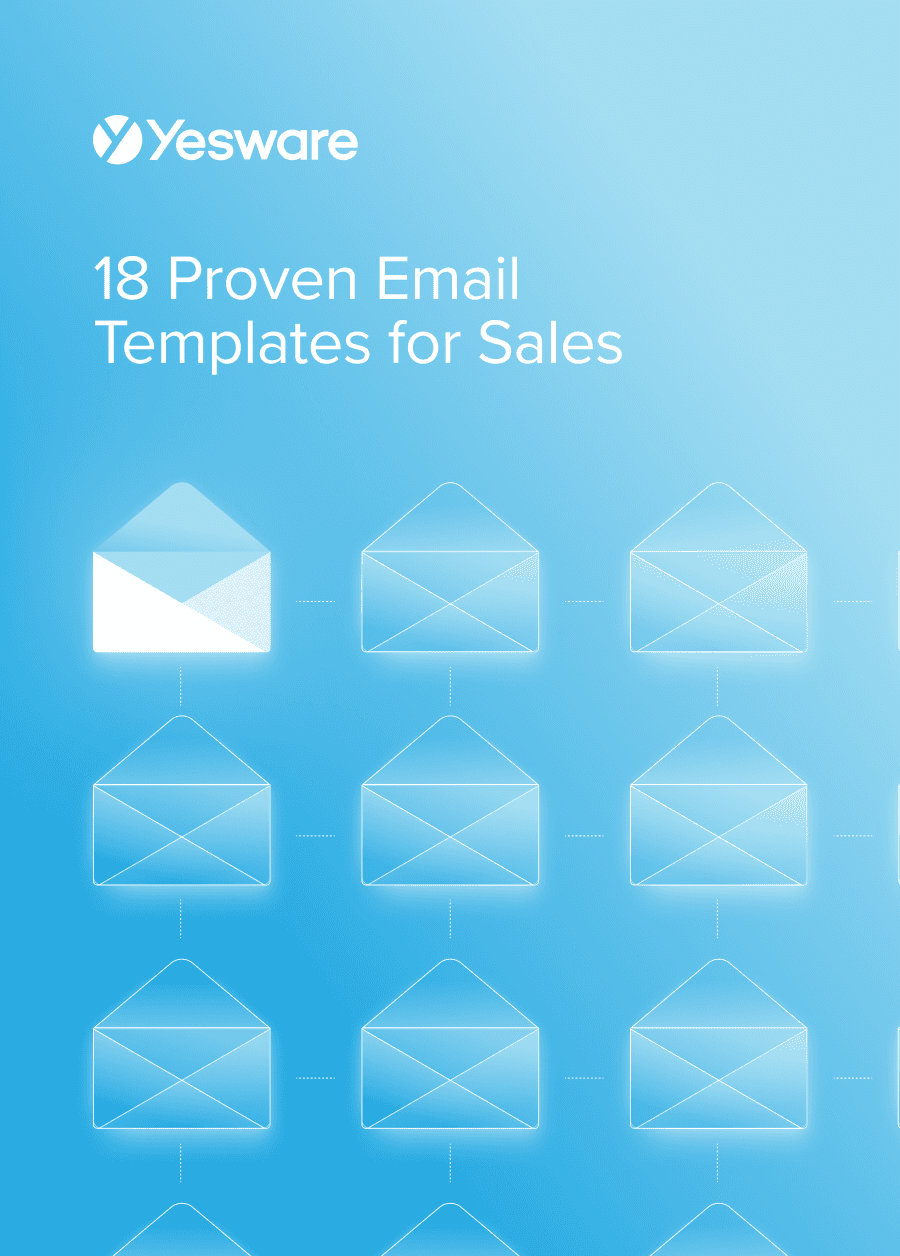 18 Proven Email Templates for SalesWinning email templates for cold outreach, follow-ups, and nurturing relationships – backed by data and real-world examples.
18 Proven Email Templates for SalesWinning email templates for cold outreach, follow-ups, and nurturing relationships – backed by data and real-world examples.
Compliance and Data Privacy in Lead Capture
Two of the most influential regulations are the General Data Protection Regulation (GDPR) and the California Consumer Privacy Act (CCPA).
The GDPR is a data protection law that applies to all organizations operating within the European Union (EU) or dealing with data subjects in the EU. The regulation requires businesses to obtain explicit consent from individuals before collecting and processing their personal data. It also grants individuals the right to access, correct, and delete their data, among other protections.
The CCPA is a state-level privacy law that grants California residents rights over their personal information, including the right to know what data is being collected, the right to request deletion of their data, and the right to opt out of the sale of their data.
Integrating Lead Capture with Your Sales Stack
Integrating lead capture tools with your CRM streamlines the lead handoff process and ensures that no lead falls through the cracks. A comprehensive CRM system can automate lead assignments and follow-up tasks to save time and increase your sales team’s efficiency.
Tip: Yesware’s integrations make it easy to connect your lead capture tools with your existing sales stack.
Measuring and Reporting on Lead Capture Success
To gauge the effectiveness of your lead capture efforts, it’s important to track key performance metrics with the help of your sales pipeline dashboards. Here are some of the most important metrics to keep tabs on:
- Conversion Rate: The percentage of visitors who complete your lead capture form or take the desired action.
- Lead Quality Score: A metric that evaluates the potential value of a lead based on factors such as demographics, behavior, and engagement level.
- Cost Per Lead (CPL): The average cost associated with capturing a single lead.
- Lead Source Performance: Understanding which channels are driving the most valuable leads helps in optimizing your lead capture efforts.
Mastering lead capture is an ongoing process that requires attention to detail and a willingness to experiment with new techniques. Sign up to try out Yesware’s suite of sales tools for free!
Get sales tips and strategies delivered straight to your inbox.
Yesware will help you generate more sales right from your inbox. Try our Outlook add-on or Gmail Chrome extension for free, forever!
Related Articles
Casey O'Connor
Casey O'Connor
Melissa Williams
Sales, deal management, and communication tips for your inbox

